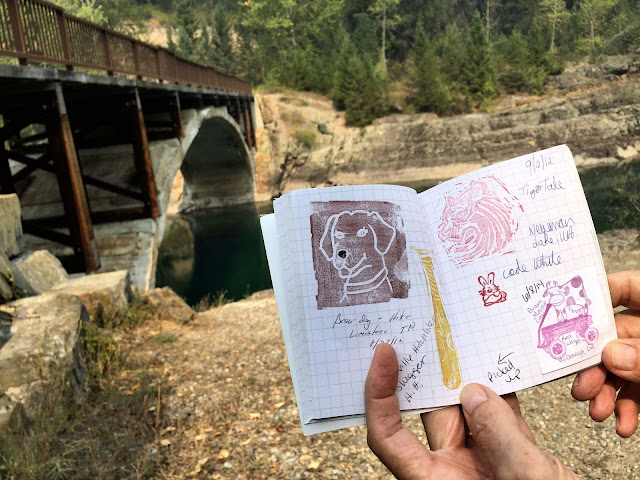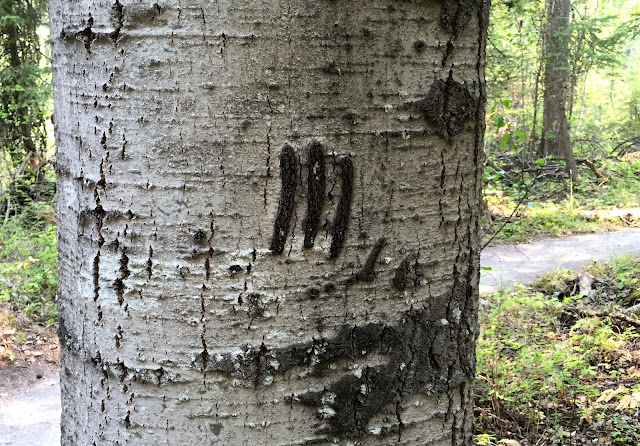IN WHICH WE THINK INSIDE THE BOX
Day 19. Kalispell, MT
After hearing so much about Glacier National Park from anyone and everyone we know who has ever visited, we definitely plan to return at some point. Three massive forest fires are now burning in and around the park. The first of these has been aflame since July 21.
The fires have now consumed more than 12,000 acres, the park's biggest burn since 2006 saw 34,000 acres burned in the eastern part of the park. The current high level of fire danger was created by dry vegetation, high temperatures and low humidity. Once a fire starts, it has plenty of large stands of timber to feed on as it spreads.
 |
| Current fire in the Thompson Creek drainage area |
According to foresters, forest fires burn in a mosaic pattern. When the smoke clears, there will be large swaths of live timber untouched by the fire amidst equally large patches of ash with only gray stubs remaining just a few feet away.
We were encouraged to learn that animals who live in the park have plenty of space to move to another area if their habitat is damaged by fire. Fires can also alter the landscape in a way that makes it more sustainable for a different type of animal. A section that had been a good habitat for a wolverine, for example, may be become ideal for a lynx. And thankfully, it is rare for animals to be caught in a fire.
Glacier National Park's rugged, remote terrain makes it impossible for any type of firefighting to be effective except water drops from the air. Unlike in earlier times, the National Park Service's goal is to allow fires to follow a natural process whenever possible to benefit the ecology of the park, as long as public safety is not threatened. So the current fires will continue until environmental conditions such as precipitation and a higher humidity level lead to their demise.
All that was left for us to do was make the best of our last day in Kalispell. Located in the Flathead Valley between Glacier National Park and Flathead Lake, Kalispell (pop. 20,973) is surrounded by craggy mountains, dense forests, and glacier-fed lakes and crystal rivers. As the largest city in northwestern Montana, Kalispell serves as a commercial and retail center, offering most major big box stores. After visiting a couple of them this morning, we set out to search for some letterboxes in the area.
 |
| Viking Creek Nature Trail |
space.
 |
| Logbooks told us we were following in the footsteps of our Georgia friend, Brown Cow. |
Then we headed back toward Glacier for the afternoon. As we drove east, the smoke thickened steadily. It was much, much worse than yesterday, and today included the acrid odor of burning evergreens. Amazing how the smell travels from the active fire area, which is 50 miles away at the southern border of the park.
space
 |
| Kilroy has nothing on Brown Cow. |
We continued letterboxing our way through the towns of Columbia Falls and Hungry Horse and on to West Glacier, hoping the air would be a little better there and allow us to go on a hike in the park. But instead, the air seemed even more tainted than in Kalispell. So we found a few drive-by letterboxes and returned to the hotel at 3:30, calling it a day.
Tomorrow we hope to leave the smoke behind as we travel south to Helena to visit the Montana State Capitol.
WEDNESDAY, 26 AUGUST 2015
Daily Stats
- Miles driven: 93
- Miles walked: 4.2
- Weather: 44° to 80°, hazy
 |
| Perfect place to stamp in on the Viking Creek trail. |
 |
| A bear left his territorial mark on this tree. |
 |
| Clever use for an old delivery truck. |




